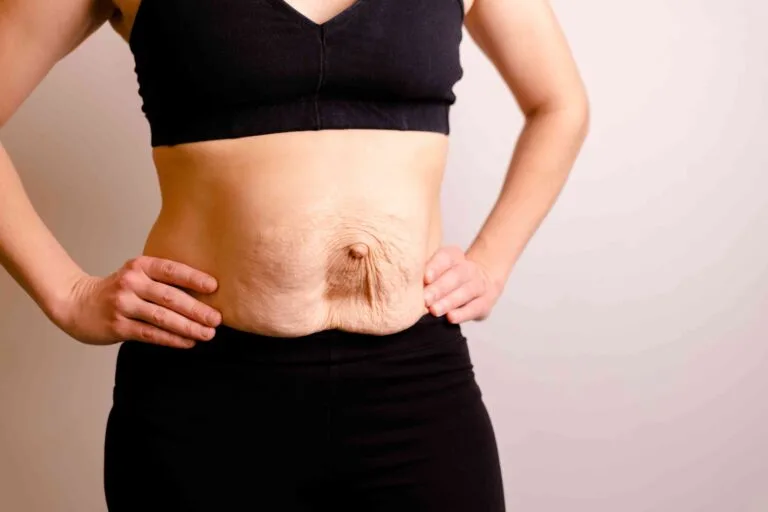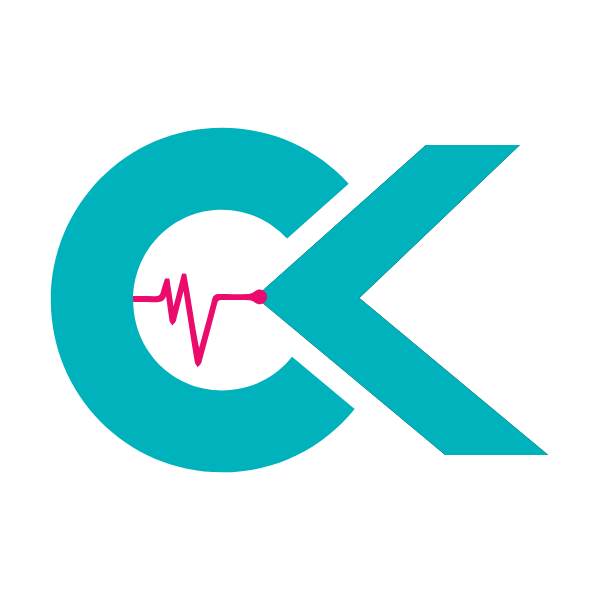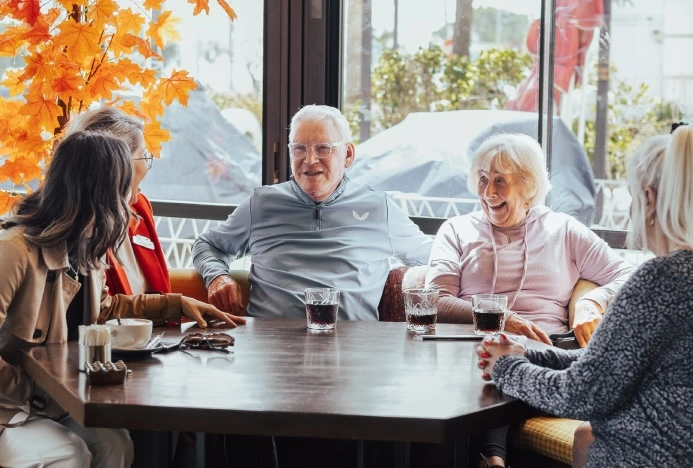The advent of GLP-1 receptor agonists like Ozempic has revolutionized weight management for many individuals. Offering a powerful tool in the fight against obesity and type 2 diabetes, these medications have enabled significant and often rapid weight loss. However, alongside the celebrated health benefits, a distinct concern has emerged for many patients: the development of loose skin post Ozempic. This phenomenon, while not exclusive to Ozempic users, is a direct consequence of the body’s transformation, often occurring at a pace that the skin’s natural elasticity cannot match. For many, particularly women in the UK, the cosmetic and emotional impact of this excess skin can be substantial, as detailed in this BBC report on UK women’s experiences. This authoritative guide will delve into the complexities of skin laxity after Ozempic-induced weight loss, explore the underlying mechanisms, discuss effective management strategies, and highlight why CK Health Turkey champions comprehensive surgical solutions over a sole reliance on injections.
Table of Contents
Understanding Ozempic and Its Impact on Weight Loss
Ozempic (semaglutide) is a glucagon-like peptide-1 (GLP-1) receptor agonist that works by mimicking a natural hormone in the body. It helps regulate blood sugar, slows gastric emptying, and reduces appetite, leading to significant calorie reduction and subsequent weight loss. While incredibly effective for many, this rapid reduction in body fat can lead to changes in body composition that the skin struggles to accommodate. The speed of weight loss, though desirable for health improvements, often outpaces the skin’s ability to retract and remodel.
Why Does Loose Skin Occur?
Loose skin, medically termed skin laxity or cutis laxa, is a common aftermath of substantial weight loss. It’s not simply a cosmetic issue but can lead to physical discomfort, hygiene challenges, and psychological distress. The primary factors contributing to this condition are multifaceted.
Skin Elasticity and Collagen
The skin is a remarkably resilient organ, capable of stretching and retracting thanks to its intricate composition of collagen and elastin fibers. Collagen provides strength and structure, while elastin provides elasticity. When the body gains significant weight, the skin stretches to accommodate the increased volume. Prolonged overstretching can damage these fibers, diminishing the skin’s ability to recoil. As individuals age, their natural collagen and elastin production declines, making the skin less elastic and more prone to sagging, even with less drastic weight fluctuations. Genetics also play a crucial role in determining an individual’s skin quality and its inherent elasticity.
Rapid Weight Loss and Its Impact
Rapid weight loss, whether achieved through diet, exercise, bariatric surgery, or GLP-1 agonists like Ozempic, is a primary catalyst for loose skin. When fat stores diminish quickly, the underlying support structure of the skin is lost. If the skin’s elasticity is compromised due to age, genetics, or the extent of stretching, it cannot shrink back to fit the new, smaller body contour. This leaves behind folds and excess tissue that hang from the body. The faster the weight is lost, the less time the skin has to gradually adapt, exacerbating the problem.
The Ozempic Effect: Beyond the Scales
While Ozempic offers a powerful pathway to weight reduction, its mechanisms and potential side effects warrant careful consideration, especially concerning body composition changes.
Muscle Mass and Body Composition
One critical aspect of weight loss, regardless of method, is the composition of the lost weight. While the primary goal is often fat reduction, significant or rapid weight loss can also lead to a decrease in lean muscle mass. This is particularly relevant for GLP-1 agonists like Ozempic. A systematic review and meta-analysis by Wang et al. (2023) highlighted that while GLP-1 receptor agonists lead to substantial reductions in body weight primarily through fat mass loss, they can also contribute to some lean mass loss. This finding underscores the importance of integrating concurrent lifestyle interventions, such as strength training and adequate protein intake, to preserve muscle and optimize overall body composition. The loss of underlying muscle mass can further contribute to the appearance of skin laxity, as muscle provides structural support beneath the skin.
Gastrointestinal Side Effects
Beyond the aesthetic concerns, it’s also important to acknowledge common gastrointestinal side effects associated with Ozempic, such as nausea, vomiting, diarrhea, and constipation. While often manageable, these can impact a patient’s quality of life and adherence to treatment, highlighting the comprehensive nature of medical weight management.
Ozempic vs. Bariatric Surgery: A Holistic View
When considering long-term weight management and addressing body composition, a direct comparison between pharmaceutical interventions like Ozempic and established surgical methods reveals distinct advantages and considerations. CK Health Turkey advocates for surgical solutions as a more controlled and sustainable approach to significant weight loss, often leading to more predictable outcomes in managing excess skin.
Science Reveals: Weight Loss Surgery vs. Ozempic provides an in-depth analysis, but here’s a crucial comparison:
| Factor | Ozempic (GLP-1 Agonists) | Bariatric Surgery |
|---|---|---|
| Weight Loss Mechanism | Appetite suppression, slowed gastric emptying, metabolic effects | Restrictive and/or malabsorptive changes to GI tract, hormonal shifts |
| Rate of Loss | Gradual to moderate | Often rapid initially, then sustained |
| Sustainability | Requires continuous medication; weight regain possible upon cessation | Long-term, durable weight loss with lifestyle changes |
| Nutritional Impact | Potential for muscle loss if protein intake is not prioritized | Requires strict dietary adherence and vitamin supplementation |
| Skin Laxity Risk | Significant, due to rapid fat loss and potential muscle loss | Significant, due to substantial and rapid weight loss |
| Reversibility | Reversible upon stopping medication | Irreversible changes to anatomy (some procedures are revisable) |
| Cost (Long-Term) | High, continuous medication costs | Higher upfront cost, but often better long-term value |
Strategies for Managing Loose Skin Post Ozempic
Managing loose skin post Ozempic involves a combination of preventative measures, non-surgical interventions, and ultimately, surgical body contouring.
Non-Surgical Approaches
While non-surgical methods cannot replicate the results of surgical skin removal, they can improve skin quality and provide some minimal tightening for mild laxity.
- Consistent Exercise: Incorporating strength training helps build muscle mass, which can fill out some of the loose skin and provide a firmer underlying structure. Cardiovascular exercise supports overall skin health and circulation.
- Balanced Nutrition and Hydration: A diet rich in protein, vitamins (especially C and E), and minerals supports collagen production and skin repair. Adequate hydration keeps skin plump and supple.
- Topical Creams: Creams containing retinoids, hyaluronic acid, or peptides may offer modest improvements in skin texture and elasticity, though results are often temporary and limited.
- Non-Invasive Treatments: Technologies like radiofrequency (RF), ultrasound, and intense pulsed light (IPL) can stimulate collagen production in the deeper layers of the skin. These treatments are best suited for mild to moderate laxity and typically require multiple sessions.
Surgical Solutions: Body Contouring Procedures
For significant loose skin post Ozempic, surgical body contouring remains the most effective and definitive solution. These procedures remove excess skin and often reposition remaining tissues to create a smoother, more toned appearance. Patients who have achieved significant weight loss, whether through Ozempic or bariatric surgery, often consider these procedures to complete their transformation.
Abdominoplasty (Tummy Tuck)
This procedure removes excess skin and fat from the abdomen and tightens the underlying abdominal muscles. It is highly effective for addressing saggy skin in the midsection, which is a common concern after substantial weight loss.
Brachioplasty (Arm Lift)
An arm lift addresses loose skin and fat on the upper arms, typically extending from the armpit to the elbow. The procedure sculpts the arms, restoring a more proportionate contour.
Thigh Lift
Loose skin on the inner and outer thighs can be a challenge. A thigh lift removes this excess skin, resulting in firmer and smoother thigh contours, improving comfort and mobility.
Breast Lift (Mastopexy)
Weight loss can lead to sagging breasts. A breast lift reshapes and elevates the breasts, removing excess skin and repositioning the nipple and areola for a more youthful profile.
Facelift/Neck Lift
For facial and neck laxity, procedures such as a facelift or neck lift can remove excess skin, tighten underlying muscles, and reduce the appearance of jowls and a ‘turkey neck’, restoring a more defined facial contour.
The Importance of Professional Consultation
Determining the most appropriate course of action for loose skin post Ozempic requires a thorough evaluation by experienced medical professionals. A consultation with a plastic surgeon will assess the extent of skin laxity, discuss surgical and non-surgical options, and help establish realistic expectations for results and recovery.
CK Health Turkey: Your Partner in Comprehensive Weight Management and Body Contouring
At CK Health Turkey, we understand the journey of weight loss is complex and deeply personal. We are dedicated to providing a holistic approach to patient care, from initial consultation through to post-operative support. For international patients, particularly those from the UK, we offer world-class medical services at a fraction of the cost found in their home countries, without compromising on quality or safety. We specialize in comprehensive solutions that address the full spectrum of weight management, including advanced body contouring procedures to address loose skin post Ozempic or significant weight loss. Our expert surgeons are highly experienced in performing procedures such as abdominoplasty, arm lifts, and thigh lifts, helping patients achieve their desired aesthetic and functional outcomes.
While Ozempic has its place in weight management, CK Health Turkey emphasizes the long-term sustainability and comprehensive body transformation offered by weight loss surgeries. Procedures like Gastric Sleeve in Turkey and Gastric Bypass in Turkey provide a foundation for significant and lasting weight loss, often making subsequent body contouring procedures more impactful and rewarding. Our commitment is to guide you through this transformative process, ensuring your health, safety, and satisfaction. We believe in empowering our patients with effective and lasting solutions.
Contact CK Health Turkey today for a personalized consultation and discover how we can help you achieve your aesthetic goals following significant weight loss.
Cost Comparison: UK vs. Turkey for Body Contouring
The financial aspect of body contouring procedures is a significant consideration for many patients. Turkey has emerged as a premier destination for medical tourism, offering exceptional value for high-quality treatments compared to the United Kingdom.
| Service/Item | Turkey Price (GBP) | UK Price (GBP) |
|---|---|---|
| Abdominoplasty | £3,000 – £4,500 | £6,000 – £10,000 |
| Brachioplasty | £2,000 – £3,500 | £4,000 – £7,000 |
| Thigh Lift | £2,500 – £4,000 | £5,000 – £8,500 |
| Breast Lift | £2,800 – £4,200 | £5,500 – £9,000 |
| Full Body Lift | £6,000 – £9,000 | £12,000 – £20,000 |
*Prices are estimates and can vary based on the complexity of the procedure, the surgeon’s fees, clinic facilities, and other factors.
Post-Surgical Recovery and Long-Term Outlook
Undergoing body contouring surgery is a significant decision with a defined recovery period. Patients can expect detailed post-operative instructions and ongoing support from CK Health Turkey.
Immediate Post-Operative Care
Immediately after surgery, patients will experience some swelling, bruising, and discomfort, which can be managed with prescribed medication. Drains may be placed to prevent fluid accumulation. Compression garments are typically required to reduce swelling, support healing tissues, and enhance the new body contours. Rest is paramount during this initial phase, with limited activity to allow the body to heal.
Long-Term Results and Maintenance
While surgical body contouring provides dramatic and lasting improvements, maintaining the results requires a commitment to a healthy lifestyle. This includes a balanced diet, regular exercise, and stable weight. Significant weight fluctuations after surgery can compromise the aesthetic outcome. The long-term outlook for patients is generally excellent, with high satisfaction rates once recovery is complete and results are fully appreciated. The removal of excess skin not only enhances appearance but can also alleviate physical discomfort, improve hygiene, and boost self-confidence, truly completing the weight loss journey.
FAQs
What causes loose skin after Ozempic weight loss?
Loose skin is primarily caused by significant and often rapid fat loss that outpaces the skin’s ability to retract. Factors like age, genetics, and the extent of weight lost also play a crucial role by affecting skin elasticity and collagen integrity.
Can diet and exercise tighten loose skin post Ozempic?
While a healthy diet and targeted strength training can improve skin quality and build underlying muscle mass, they are generally insufficient to address significant skin laxity. They are important for overall health and maintaining results but cannot remove large amounts of excess skin.
Are there non-surgical treatments for loose skin?
Yes, non-invasive treatments such as radiofrequency, ultrasound, and certain topical creams can stimulate collagen production and provide mild to moderate skin tightening. However, their effectiveness is limited for severe skin laxity.
What surgical options are available for loose skin post Ozempic?
Surgical options include body contouring procedures like abdominoplasty (tummy tuck), brachioplasty (arm lift), thigh lift, breast lift, and facelift/neck lift. These procedures surgically remove excess skin to create a smoother, more toned appearance.
What is the recovery like after body contouring surgery?
Recovery involves managing swelling, bruising, and discomfort with medication. Patients typically wear compression garments, restrict activity, and require several weeks for initial healing. Full recovery can take several months, with final results becoming apparent over time.
Why should I consider CK Health Turkey for skin removal surgery?
CK Health Turkey offers expert surgeons, state-of-the-art facilities, and comprehensive patient care at significantly lower costs compared to the UK. We provide a full spectrum of body contouring procedures and support, ensuring high-quality results for international patients.
Is weight loss surgery a better option than Ozempic for preventing loose skin?
While both can lead to loose skin due to significant weight loss, weight loss surgeries like gastric sleeve or gastric bypass often provide more controlled and sustainable weight loss outcomes. CK Health Turkey recommends surgical solutions for long-term weight management, which can better set the stage for subsequent body contouring.
How much does skin removal surgery cost in Turkey compared to the UK?
Skin removal surgeries in Turkey are typically 50-70% more affordable than in the UK, offering substantial savings without compromising on the quality of care or surgical expertise. Specific costs vary by procedure and complexity.



